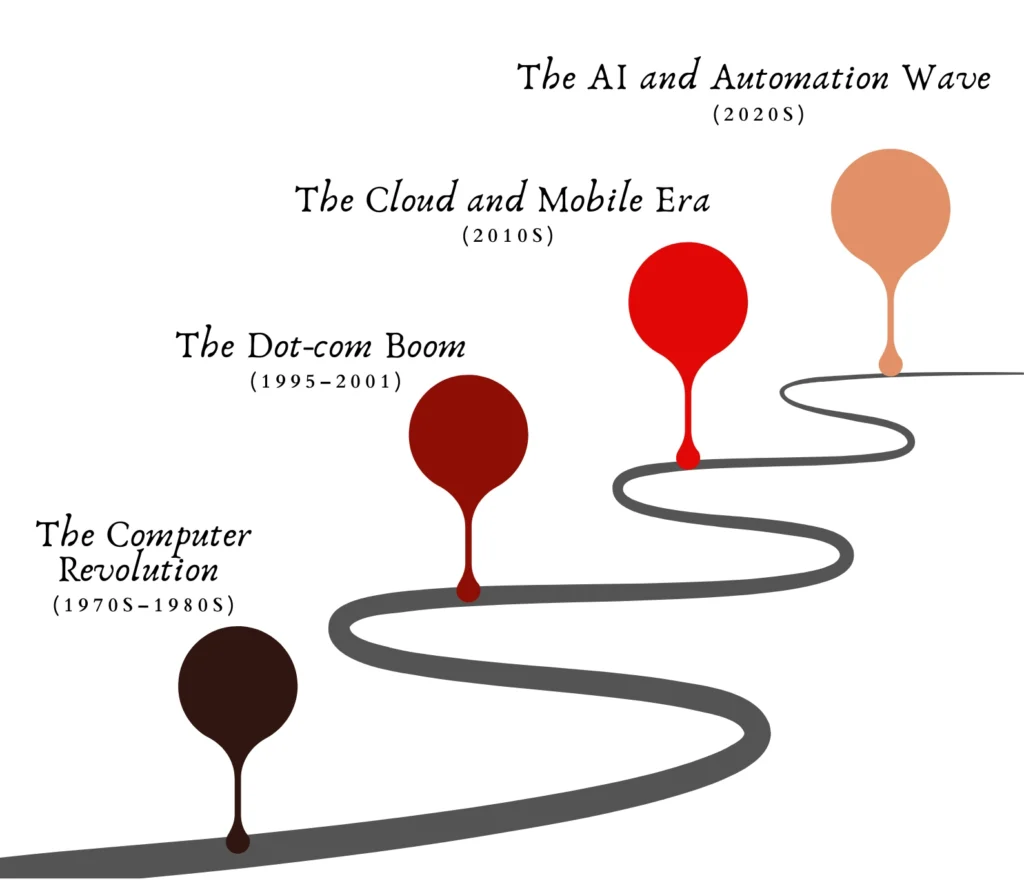In India’s leading tech hubs like Bengaluru, Noida, and Gurgaon, a seemingly paradoxical labor trend is unfolding. On one hand, companies are laying off thousands of employees, particularly from traditional IT and service roles. On the other, they are aggressively hiring for roles in emerging technologies. This phenomenon, often referred to as a “crash crunch,” reflects a deeper transformation in the structure of the Indian economy and its alignment with global technological shifts.
Understanding the Crash Crunch
The term “crash crunch” encapsulates a simultaneous collapse and surge within the same ecosystem. The “crash” pertains to the redundancy of roles in manual coding, legacy tech platforms, backend support, and non-specialized IT services—functions increasingly rendered obsolete by automation, cost efficiency mandates, and declining global demand for basic services. In contrast, the “crunch” represents a severe shortage of high-skilled professionals in AI, data science, cloud computing, cybersecurity, and other advanced digital technologies.
According to a 2024 NASSCOM report, over 90,000 tech jobs were eliminated in India, while more than 150,000 new roles went unfilled due to a lack of skilled talent. This disconnect is not a contradiction, but a sign of evolution. Companies are transitioning from service providers to product builders, demanding a radically different skillset.
The Schumpeterian Perspective: Creative Destruction at Work
This transition aligns remarkably with the economic model proposed by Joseph Schumpeter, who described capitalism as a process of “creative destruction.” In this model, old industries and roles are continuously dismantled to make way for innovation, new industries, and productivity gains. The crash crunch is not an anomaly—it is a textbook example of Schumpeterian dynamics.
As India moves from a volume-based outsourcing model to a value-driven innovation economy, companies are no longer rewarded for sheer headcount. Instead, they are judged by the quality and creativity of their technological output. The fallout is predictable: legacy roles vanish, high-value ones emerge, and the cycle begins anew.
Historical Parallels: How Every Tech Revolution Followed the Cycle

From the 1970s onward, successive waves of technological change have disrupted existing job markets while creating new, often more specialized roles. The Computer Revolution eliminated clerical and typewriting jobs but gave rise to computer operators and IT administrators. The Dot-com Boom (1995–2001) transformed traditional media, retail, and communications, generating demand for web developers and digital marketers, despite a volatile bust that followed. In the 2010s, the shift to cloud computing and mobile platforms rendered on-premise systems outdated, leading to the rise of DevOps engineers, mobile app developers, and cloud specialists, along with widespread adoption of remote work and global tech outsourcing.
The 2020s are being defined by AI and automation, which are displacing routine IT roles such as backend support and manual QA, while boosting demand for AI engineers, prompt engineers, and cybersecurity analysts. As with previous waves, the early stages bring disruption, layoffs, and uncertainty—but historically, each phase has led to higher productivity, more strategic roles, and economic renewal. Today’s tech-driven transitions, though challenging, are part of a recurring pattern of adaptation and innovation in the digital economy.
The Causal Chain: A Modern Economic Relationship
Technological advancement and automation are phasing out legacy roles, triggering mass layoffs while simultaneously creating a talent gap in high-skill domains like AI, cloud computing, and cybersecurity. This demand fuels a surge in upskilling, with platforms such as Scaler, UpGrad, and Great Learning reporting rapid growth. As newly skilled professionals enter the workforce, innovation and productivity rise, setting off a cycle of job evolution and further automation—what economists call a Schumpeterian loop of creative destruction. These shifts impact adjacent sectors as well: urban planning adapts to remote work trends, education platforms see enrollment spikes, and full-time hiring grows more selective, prompting many to pursue freelance and contract-based roles.
The gig economy has emerged as a structural feature of this new landscape. With many mid-level IT professionals displaced and companies prioritizing agility and cost-efficiency, freelancing offers a viable path forward. Platforms like Flexing It and Toptal note that over 40% of laid-off tech professionals in India transitioned to freelance work in 2024, spanning roles from UI/UX to data strategy. This trend is bolstered by remote-first models and India’s robust digital infrastructure, with McKinsey projecting the gig economy could add $250 billion to GDP by 2030. Beyond income, freelancers are reshaping urban economies—investing in coworking spaces and tools, and fueling booms in Tier 2 cities like Pune and Indore. Freelancing is no longer just a stopgap—it’s a cornerstone of the evolving tech-driven economy.
Conclusion: Embrace the Cycle, Don’t Fear It
India’s current tech labor market is not broken—it’s maturing. The crash crunch is not an exception but a signal that the country is moving toward higher-value work. It is following the same economic rhythm that marked every other major leap in technological history.
Professionals and organizations that recognize this and adapt accordingly will thrive. Those who resist the cycle risk obsolescence. The Schumpeterian model teaches us that destruction is not the end—it is the beginning of something better.
The future belongs not to those who cling to the past, but to those who help build what comes next.

